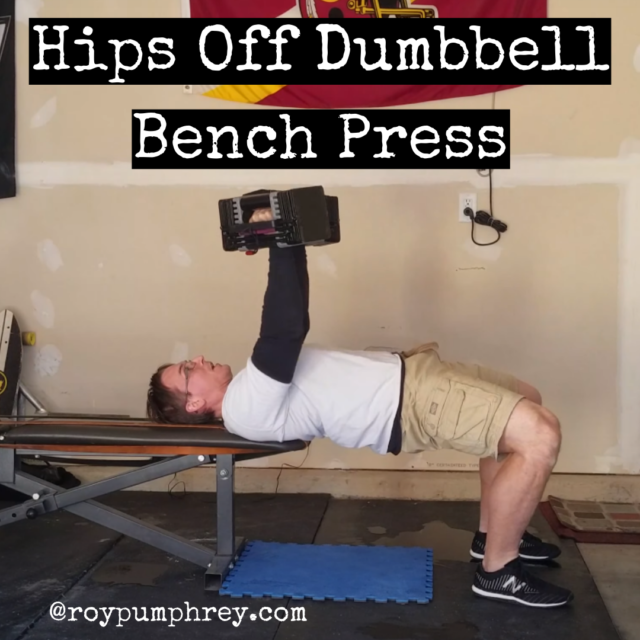
Hips Off Dumbbell Bench Press
I’m willing to bet you don’t create enough tension when you press.
I know I don’t.
How do I know this?
Just go to the gym and watch folks bench press.
You’ll see lots of wiggling around, feet tapping and moving, knee coming in and out, hips up and down.
But watch the strongest, smoothest bench.
What do you see?
None of that, usually.
There is always that dude who is a freak, has craptastic technique and is waaaaaay stronger than almost everyone else.
But we call those people freaks, lucky, outliers and wasting lots of potential if they just got their shit right.
Why?
The strongest tend to use the WHOLE body, especially for the heaviest/ hardest lifts.
But Isolation?
Muscle Isolation was a concept that began in rehabilitation, then was used to sell machines.
Why Rehab?
In the early stages it can be very important to reactivate and train the targeted (injured) muscles and not allow “overflow” to the synergists.
You can see this in rotator cuff rehab where the delts, pecs and lats could take over and perform the movements (not the job) of an injured rotator cuff.
Essentially, you “fake” the exercise because the body follows the path of least resistance, not the best path.
Machines?
If I can sell you 50K worth of weight machines, each for a different body part, vs. you spending 2-10K (and 10K is like SUPER fancy) for a weight rack and some weights.
You’re gonna be the king of circuits and I’m gonna be like Scrooge McDuck.

In Defense of Isolation:
Many, maybe most, high level bodybuilders do use isolation exercises.
Many swear by them.
And if isolation is inferior, how do they get sooo huge?
1: They have superior genetics
2: They spent YEARS, sometimes DECADES, completely dedicated (24/7/ 365) to bodybuilding
3: By the time they get to that level, they’re spending huge amounts of energy and time to improve VERY SPECIFIC muscles, to bring up lagging parts or perfect symmetry.
Ben Pakulski, IFBB pro and Mr. Olympia competitor is a HUGE advocate of muscle isolation for body builders:
But, if you watch and listen to this, while it isolation for the biceps the rest of the body is creating a rigid pillar to allow that biceps isolation and peak biceps torque.
They key here, much like in rehabilitation is to MAKE THE TARGETED MUSCLE DO THE WORK.
So, maybe its not all that different?
At least not with free-weight movements.
Multi-joint Movements = Bigger Bang For Your Buck
At the end of the day, for 99% of people, multi-joint movements probably give you more strength, overall muscle development and coordination due to using more muscles.
“training with MJ (multi-j0int) exercises promoted superior strength gains in all exercises tested, which may be due to the higher neural challenge promoted by MJ exercises.” – Resistance Training with Single vs. Multi-Joint Exercises at Equal Total Load Volume: Effects on Body Compostion, Cardiorespiratory Fitness and Muscle Strength
But even if multijoint exercise isn’t superior for muscle strength and size, it does seem to be superior overall.
Unless you like soreness, more time in the gym etc..
“The results of this review suggest that performing SJ exercises may not bring additional benefits to MJ exercises when comparing both short- and long-term responses, in either trained or untrained individuals, for exercise involving the upper limbs. Moreover, the addition of SJ exercise to an MJ exercise program does not seem to increase gains in muscle size and strength. Fatigue responses, perceived effort, and soreness seem to be greater for SJ exercise; however, as this does not seem to be accompanied by greater adaptations, the indiscriminate use of SJ exercise may be detrimental since it induces higher discomfort without bringing superior results. The only presently proven instance in which SJ exercises might be recommended is for individuals wishing to condition their lumbar extensor musculature. Based on these findings, we suggest that persons performing RT may not need to include SJ exercises in their program to obtain equivalent results in terms of muscle activation and long-term adaptations such as hypertrophy and strength” – Single vs. Multi-Joint Resistance Exercises: Effects on Muscle Strength and Hypertrophy
We used to call this,
Functional Training
But I’ve moved away from that because in the words of Prof. Zatsiorsky,
“All training has a function, therefore, all training is functional”
For ease of conversation, the Hips off Dumbbell Bench Press is more functional.
Hips off Dumbbell Bench Press teaches how to keep the hips/ legs/ core active and creating tension and holding tightness through the press.
Its also a good teacher of bridge/ pelvic position.
If you do these and your low back gets jacked up?
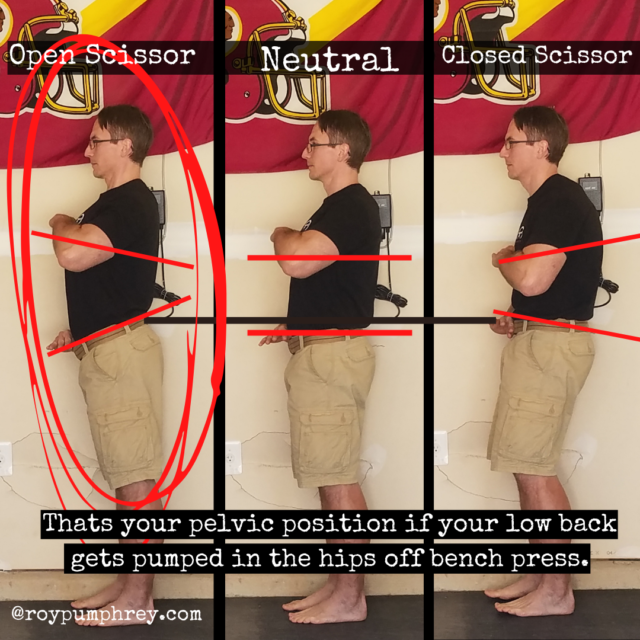
You’re glutes are not nearly active enough, you’re not using them to hold the bridge and you’re in a poor, usually anteriorly tilted pelvic position.
Hips Off Dumbbell Bench Press:
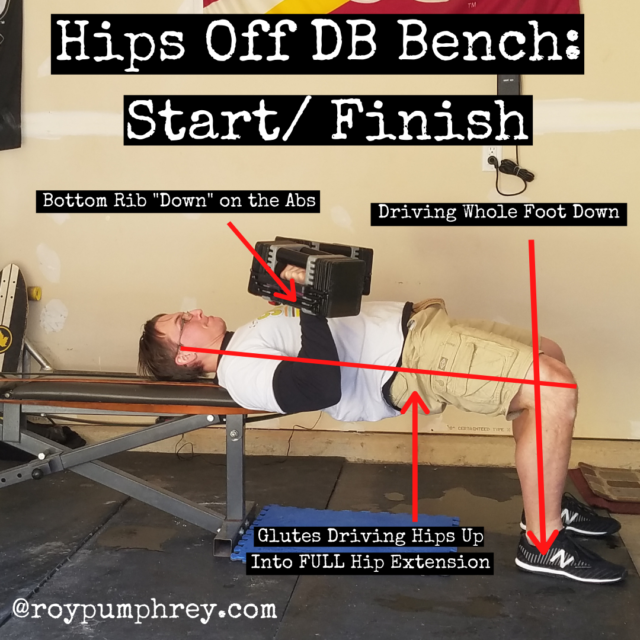
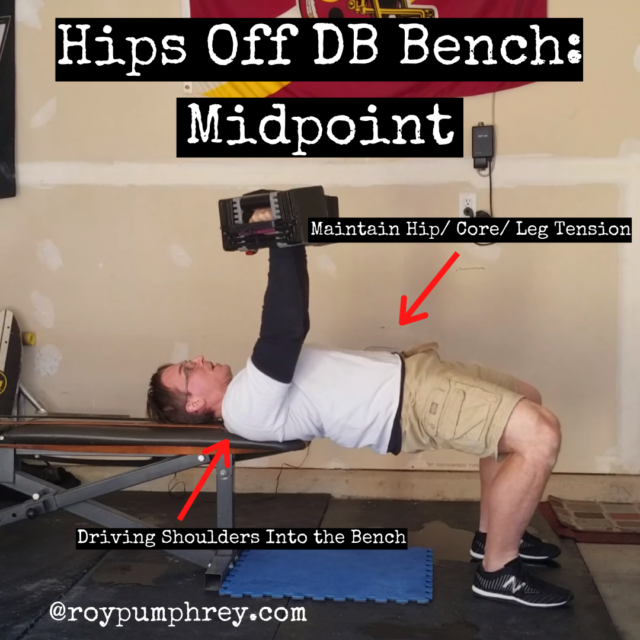
Checklist:
- Shoulders packed (pinched together and pulled down into the “back pockets”
- Hips up into full extension (top of a bridge/ no hip crease).
- Knees at 90 degrees (vertical shins) or close to it.
- Active lower body the WHOLE LIFT.
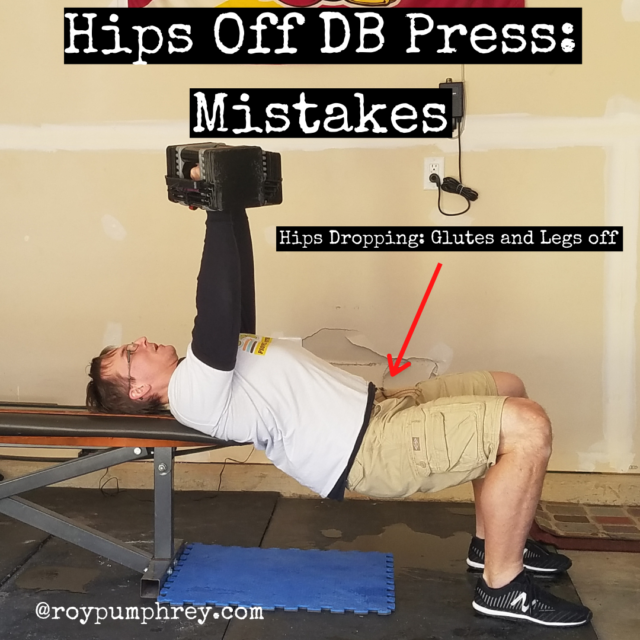
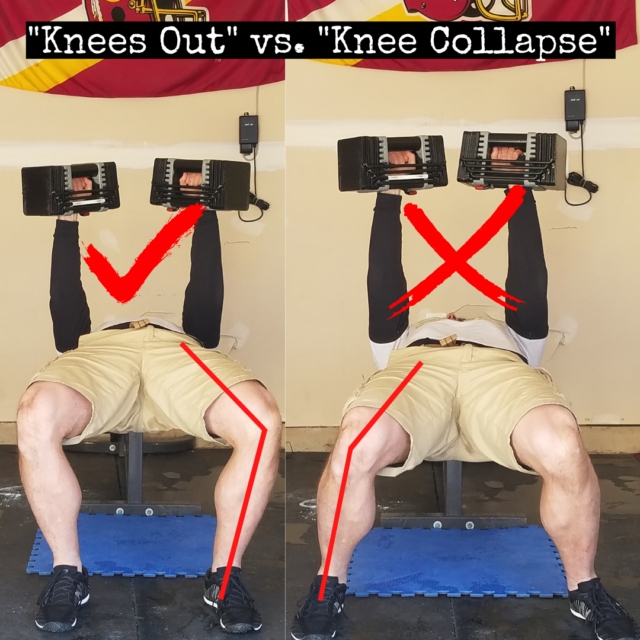
Bro tip:
Setting up for this exercise can be a total PITA (pain in the ass).
But, it doesn’t have to be.
Press the easy button, watch and listen to this video:


